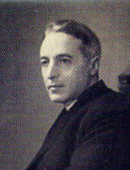

In 1938 he published História da Igreja [History of the Church] (republished in 1942, 1952, and 1959). The bibliography he used had an obvious pedagogical slant, showing the influence of the French historiographical panorama, which he followed closely. The clarity of the text, which aimed to be "correct and in line with the latest conclusions of historical research", was intended to serve an explicit didactic purpose ("it is particularly aimed at youth and members of Catholic Action, the apostolate of which does not have to be carried out, as a rule, in high intellectual spheres"). These characteristics were recognised by Alfredo Pimenta, who classified the work— in his notes to A História da Igreja do P.e Miguel de Oliveira (1938) [The History of the Church by Father Miguel de Oliveira]— as a "small volume of 300 pages, with images and a mellifluous cover, like the voice of my priest", pointing out some errors of fact and, above all, the dated bibliography on which it was based. Miguel de Oliveira hit back at these criticisms, in that same year and with the same violent style, in História da Igreja. Resposta a um crítico ou Crítica duma resposta [Church History. Response to a critic or Criticism of a response], noting they would be motivated less by scientific interest than by spite arising from the criticisms that had been made of them in the newspaper Novidades [News] .
With similar aims of dissemination and synthesis but also with didactic concerns, he published in 1940 História Eclesiástica de Portugal [Ecclesiastical History of Portugal]. Successively re-edited in 1948, 1958, and 1968, it was updated in 1994 by Artur Roque de Almeida. Fulfilling the purpose of "being objective without any intention of apologising", the work nevertheless denotes proximity to the mood of nationalist fervour that the Estado Novo was instigating. The author was interested in underlining the "unity by Faith" that should put an end to the assumed "disquiet in which the Portuguese lived during periods of disagreement between the State and the Church" ( História Eclesiástica... [Ecclesiastical History], I). The solidity of the work went hand in hand with the aim of emphasising the historical role of the Catholic Church in the country's history, blaming elements foreign to nationality (among them, the "anti-religious prejudices of French philosophies", "the Freemasonry influences" and the "anarchic tendencies of Protestantism, imported from England" ( História Eclesiástica de Portugal , p. 298) for what he considered an atmosphere of persecution of the ecclesiastical institution, particularly in his assessment of contemporary Portugal. Following the organisation by dynasties (although he didn't establish a separate section for the Philippine period), he dedicated the last period to the "Liberal Monarchy and the Democratic Republic", although he considered that he gave the "century of Liberalism an autonomy that perhaps the future will not recognise" ( História Eclesiástica... , III). Positively reviewed by José Vives and Pierre David, who considered it an "excellent handbook" that revealed a "judicious critical spirit" and openness "to the new developments of science," it had, among others, the merit of emphasising the scarcity of historiographical production on religious issues, even if the contours of the past were limited to the ecclesiastical sphere. However, this work opened inroads into complementary areas: each section dedicated chapters to teaching and the arts, as well as elements relating to the religious experience of the faithful. When it comes to weighing up the different periods and dynamics, he uses the terms "crisis" and "restoration" to characterise those which, in his analysis, appear to be of lesser or greater importance to the Catholic Church, Catholicism, and its agents.
This work is financed by national funds through FCT - Foundation for Science and Technology, I.P, in the scope of the projects UIDB/04311/2020 and UIDP/04311/2020.
